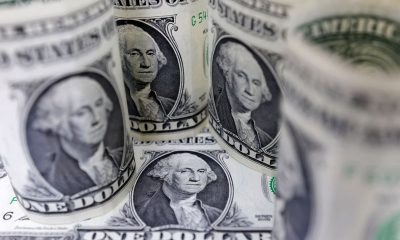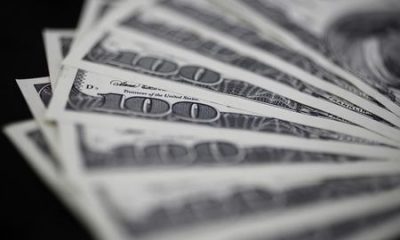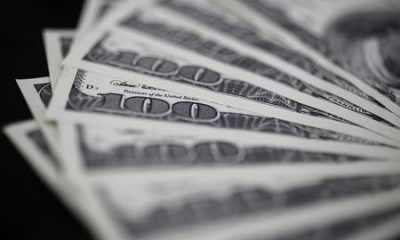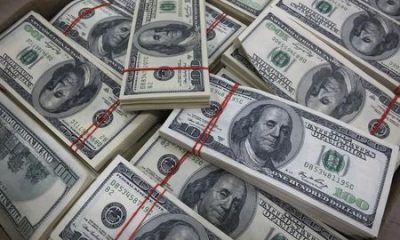Forex
Yen falls after suspected intervention on Monday, eyes on Fed
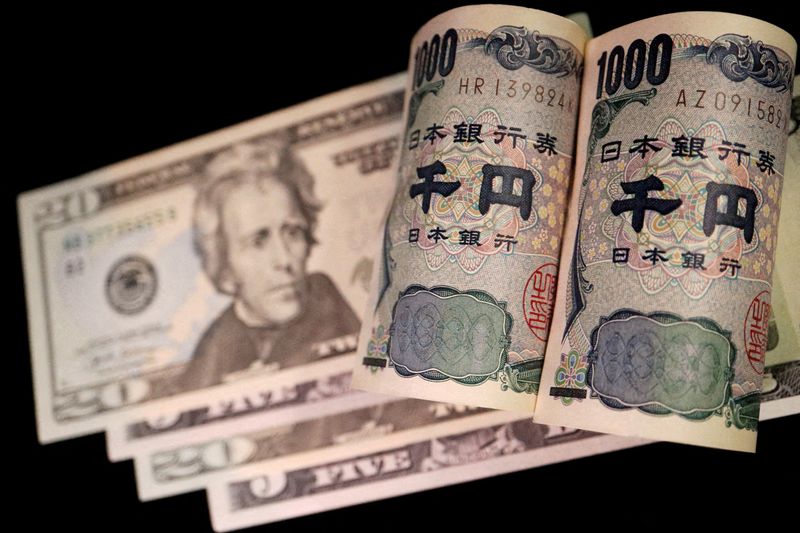
By Stefano Rebaudo
(Reuters) – The yen dropped against the dollar on Tuesday, giving up some of its sharp gains the previous day sparked by suspected intervention by Japanese authorities.
The currency was down 0.35% to 156.90 per dollar, but off its 34-year low of 160.245 hit on Monday when traders say yen-buying intervention by Tokyo drove a eye-catching rebound of nearly six yen.
It briefly dropped earlier in the session and stayed for a couple of minutes at 156.50, before recovering to 157.
Japanese officials may have spent some 5.5 trillion yen ($35.05 billion) supporting the currency on Monday, Bank of Japan data suggested on Tuesday.
“I think the BOJ will now wait for the dust to settle, but the 160 level remains the red line,” said Athanasios Vamvakidis, global head G10 forex strategy at BofA.
“Markets will test that level again, and if the Japanese authorities do not step in, the dollar can go much higher versus the yen,” he added.
The Bank of Japan (BOJ) on Tuesday left its plan for monthly bond buying unchanged for May. Japan’s government bond (JGB) investors are looking for clues on the timing of a taper, which will lead to higher, more attractive yields, supporting the yen.
“Facing that (the rates divergence between Japan and U.S.) with forex intervention typically does not end well,” said Garvey Padhraic, regional head of research Americas at ING.
“The more obvious solution to this is for Japanese rates to rise. If they don’t, something will have to give. And the bigger the hold-out, the bigger is the subsequent reaction,” he added.
remove ads
.
FOCUS ON FED POLICY MEETING
The Federal Reserve begins its two-day monetary policy meeting on Tuesday, where it’s expected to hold rates at 5.25%-5.5%, while striking a hawkish message.
“The Fed policy meeting could be a non-event for the euro/dollar as (Chair Jerome) Powell will not be as dovish as last time, but the market is already discounting such a backdrop by fully pricing just one rate cut in 2024,” Vamvakidis argued.
Traders have recently pared back bets of Fed rate cuts this year amid hotter-than-expected U.S. economic data and stubborn inflation numbers.
A rate cut in September was looking like a close call at just 44%, according to CME Group’s (NASDAQ:) FedWatch tool.
The dollar was down 0.02% to 105.67 against a basket of currencies ahead of the Fed’s meeting, after slipping 0.25% in the previous session.
“Fresh U.S. data has prompted our U.S. economist to push out his projection of the start of the Fed’s easing cycle to 2025 from December 2024,” said Thierry Wizman, global forex and rates strategist at Macquarie.
“We don’t rule out that the next change may be a hike, which would prompt a new wave of broad-based U.S. dollar strength.”
Other major central banks such as the European Central Bank (ECB) and the Bank of England (BoE) may begin to cut rates in the near future, even if the policy path is more uncertain after recent developments.
Euro zone inflation is on its way back to 2%, but the process is bound to be bumpy and geopolitical tensions pose an upside risk to price growth, ECB Vice President Luis de Guindos said late on Monday.
remove ads
.
Data showed that the bloc’s economy rebounded in the first quarter from a mild recession as Germany returned to growth and expansion accelerated elsewhere, while inflation steadied.
The euro fell 0.1% to $1.0731.
The offshore slipped 0.1% to $7.2477 per dollar and has depreciated 2% against the dollar so far this year, despite support from the central bank.
In cryptocurrencies, bitcoin fell 2% to $63,707.00.
($1 = 156.9400 yen)
Forex
BofA sees potential for further USD selling by CTAs
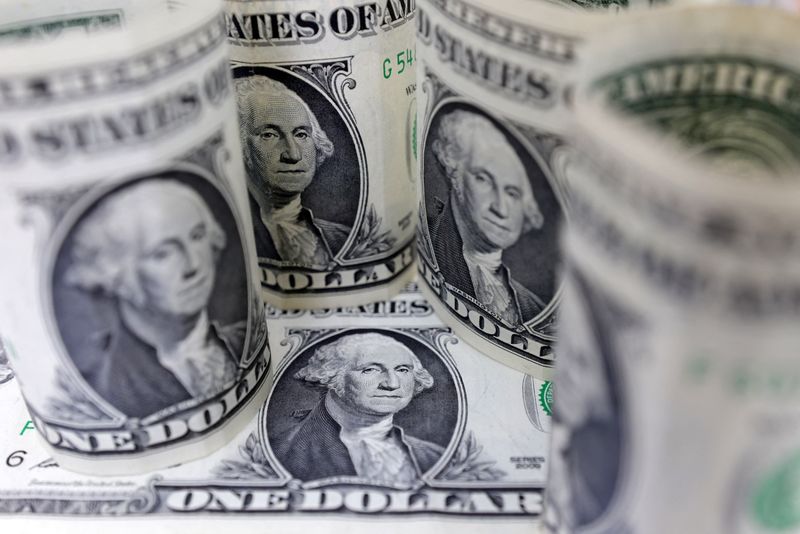
On Monday, Bank of America (BofA) provided insights into the potential actions of Commodity Trading Advisors (CTAs) in the coming week.
According to BofA, CTAs might continue to sell the U.S. dollar (USD) against most currencies following a trend that emerged after the Consumer Price Index (CPI) report led to a weakening dollar. The bank’s models indicate that USD long positions have been reduced this week.
The bank’s analysis suggests that in the foreign exchange (FX) market, CTAs are likely to persist with short covering in the euro (EUR), British pound (GBP), and Canadian dollar (CAD).
Additionally, there is an expectation for CTAs to increase their recently established long positions in the Australian dollar (AUD) and potentially initiate a long position in the Mexican peso (MXN), given the positive trend strength for the peso.
In the commodities sector, despite an increase in the price of gold last week, the trend for the precious metal declined, prompting CTAs to sell, albeit at a slower pace. BofA anticipates that this trend of selling gold and oil will continue into the next week.
The analysis also noted that CTAs’ long positions in are nearing extremely high levels, while long positions in aluminium are being unwound. In contrast, soybeans are experiencing short covering.
The bank’s report serves as a gauge of how trend-following traders might adjust their portfolios in response to market movements.
This article was generated with the support of AI and reviewed by an editor. For more information see our T&C.
Forex
BofA sees further dollar depreciation, expects G10 FX to stay in range
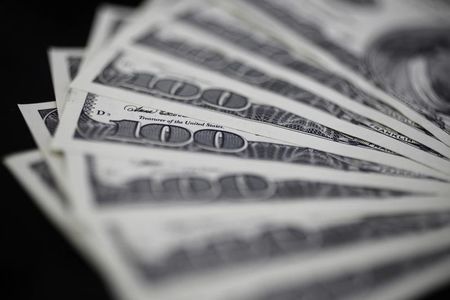
On Monday, Bank of America (BofA) analysts provided insights into the current state of G10 foreign exchange (FX) markets, noting a general sentiment of disappointment among investors due to the markets’ lack of volatility.
Despite a recent reversal in the U.S. dollar (USD), major currency pairs have not moved significantly, staying within their established ranges. BofA anticipates further depreciation of the USD, yet it emphasizes that the currency’s movements are expected to remain close to year-end consensus forecasts.
The analysis highlighted that while markets have expressed a desire for more excitement in G10 FX trading, they must come to terms with the inherent trade-off between carry trade opportunities and higher volatility. Carry trades, where investors borrow in low-yielding currencies to invest in higher-yielding ones, have been identified as a dominant trend post-global financial crisis.
However, this strategy tends to reduce market volatility, leading to what BofA describes as an “uninspiring” and “stuck in the mud” trading environment.
BofA’s commentary suggests that the pursuit of carry as a passive strategy has been a factor in dampening volatility in the FX markets. The firm underscores that investors should not expect both high carry returns and high volatility, as these market conditions are typically mutually exclusive. The lack of clear fundamental trends in G10 FX has been a source of frustration for markets, but the current trend of carry is clear, even if it leads to lower volatility.
The analysts also touched upon the anticipation around the next batch of U.S. data, which many investors hope might shift the narrative. However, BofA indicates that such expectations may be overly optimistic. The firm’s message to the markets is to adjust expectations and accept the current dynamics, with the USD continuing to play a central role in the G10 FX space.
In summary, BofA’s analysis points to a continuation of the recent patterns in G10 FX markets, with a slight downward trend in the USD value but within the bounds of recent trading ranges.
This article was generated with the support of AI and reviewed by an editor. For more information see our T&C.
Forex
Narrow dollar range likely to remain for now – Goldman
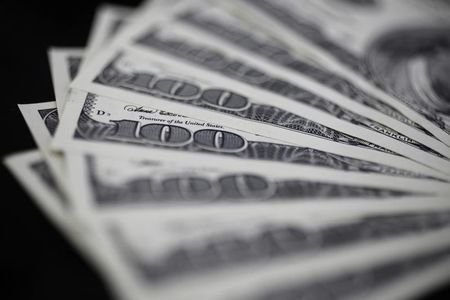
Investing.com – The U.S. dollar is trading in a calm fashion against the majors of late, and these narrow ranges will likely stay for a while longer, according to Goldman Sachs, with divergence having to wait.
AT 05:20 ET (09:20 GMT), the Dollar Index, which tracks the greenback against a basket of six other currencies, traded unchanged at 104.330, steadying after losing around 1% last week in the wake of soft U.S. inflation data.
“We think there is only limited room for the market to press Dollar shorts on the back of the inflation news,” said analysts at Goldman Sachs, in a note dated May 17.
“After all, while the prints were mostly in line with expectations, they were not in line with the target. As a result, the news does not change the policy outlook much beyond reinforcing the recent rhetoric.”
The subsequent market response has been reminiscent of the post-March FOMC FX reaction, when the response to ‘dovish dots’ stalled not because of fresh data, but instead because FX is still a relative game, and the Dollar fundamentals have not shifted much, the investment bank added.
And, this time around, we think the rally in front end rates looks more consistent with cyclical concerns rather than dovish expectations.
“That matters for FX because there is a narrow path for the Dollar to depreciate on a broad basis when growth is softening,” the bank added. “This is especially true in the current environment when faster Fed cuts would likely be met with easier policy abroad as well.”

 Forex2 years ago
Forex2 years agoForex Today: the dollar is gaining strength amid gloomy sentiment at the start of the Fed’s week

 Forex2 years ago
Forex2 years agoHow is the Australian dollar doing today?

 Forex1 year ago
Forex1 year agoUnbiased review of Pocket Option broker

 Forex2 years ago
Forex2 years agoDollar to pound sterling exchange rate today: Pound plummeted to its lowest since 1985

 Cryptocurrency2 years ago
Cryptocurrency2 years agoWhat happened in the crypto market – current events today

 World2 years ago
World2 years agoWhy are modern video games an art form?

 Stock Markets2 years ago
Stock Markets2 years agoMorgan Stanley: bear market rally to continue

 Economy2 years ago
Economy2 years agoCrude oil tankers double in price due to EU anti-Russian sanctions





